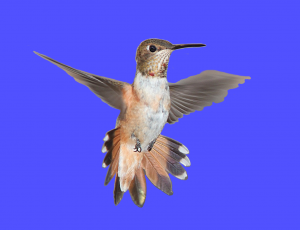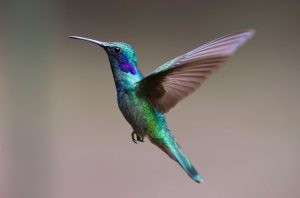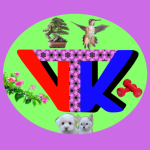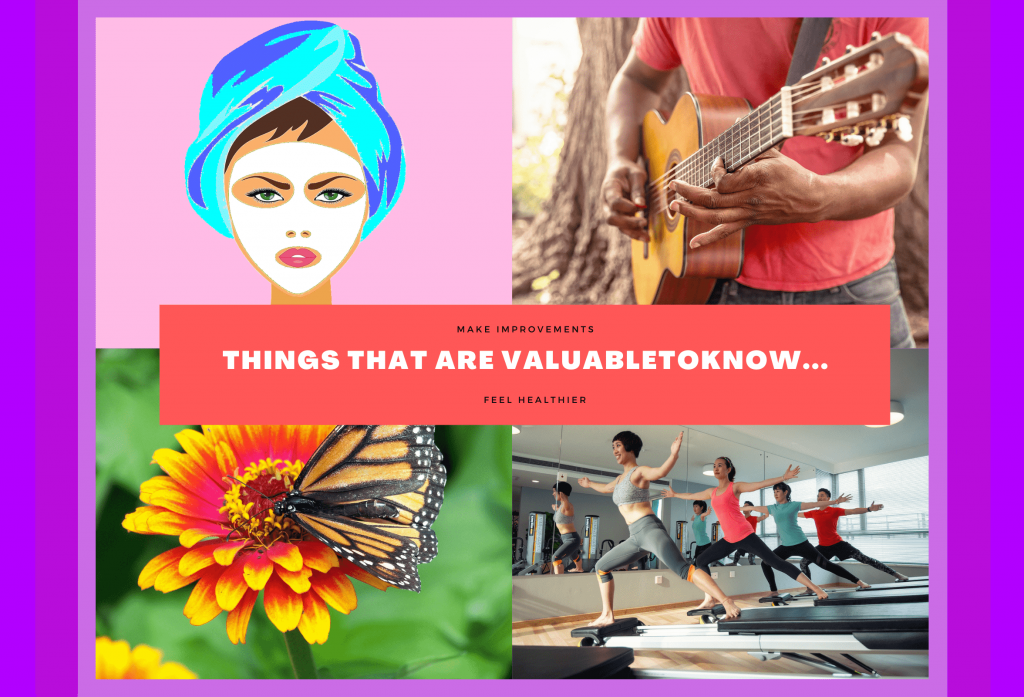
Hummingbirds and butterflies are attracted to the same types of flowers
Plants Valuable To Know To Attract Hummingbirds And Butterflies
Hummingbirds
Hummingbirds are the only birds that can fly backwards. Named for the humming sound that their wings make when they are in flight, they are among the smallest bird species. The females are larger than the male birds. They have an incredibly dense neuron network for their eyes in order to be capable of navigating while flying so fast. Consuming high sugar content nectar is necessary for them since they have the highest metabolism among animals.
I have always been filled with joy anytime I can sit at a window and watch hummingbirds. Seeing them perched and not a flurry of motion in the air, seems like an amazing chance occurrence. It is exciting to see how they can navigate up to a nectar source and hold their head and beak steady and perfectly aimed while their bodies are whirling along. Well, let’s discuss how to make them a welcomed visitor in our yards now…
First, lets talk about the proper flower…
Hummingbirds definitely prefer red. They also like the other colors in the red side of the spectrum: orange, pink, purple. Flowers that are brightly colored (especially ones that are tubular shaped) and have lots of nectar are the proper choice.
While yuccas will attract them, white does not work as well… Focus on plants with the proper flower colors so you have plentiful plants to attract regular visits from hummingbirds and butterflies, then you can also have plants with other colors. The bonus is the plants that attract hummingbirds also attract butterflies too.
Next…you want to keep them coming…
In order to establish your home as a great place for hummingbirds to visit, there are other factors to consider as well. You want to have a plentiful supply of the flowers that they like. Then, to be even more attractive, you have flowers consistently blooming throughout the season. Guidance about location choices and bloom timing to help you landscape your yard well are found at the end of this blog after the plant information.
While flowers are important here, there are lots of choices valuable to know…
You have many choices of flowering plants… vines, bushes, trees… ground cover, cascading plants…
Grow zone map
If you are unsure of the grow zone that is the area where you live…this is the best detailed information I have seen for it. This can help you in your planning…

Colorful hummingbird
Variety mix for both Hummingbirds and Butterfly
HUMMINGBIRD/BUTTERFLY SEED MIX
500 SEEDS, 3.4 OUT OF 5 STARS FOR OVER 200 REVIEWS, ZONES 4 AND UP Coneflower, Tickseed, Cornflower, Rocket Larkspur, Blanketflower, Indian Blanket, Drummand Phlox, Scarlet Sage, Candytuft, Yellow Cosmos, Sweet William, Cosmos, Wallflower, Lemon Mint, Tuber Vervain, Standing Cypress, Black-eyed Susan, Shasta Daisy, Plain Coreopsis, Butterfly Weed, Sweet Alyssum, Spurred Snapdragon
Vines
Trumpet vine (Hummingbird vine)
Honeysuckle vine
Clematis
Wisteria
Bushes
Butterfly Bushes (Buddleia) Zone 5 to 9
Pink
Red
Purple
Bi-color
PINK AND RED BUTTERFLY BUSH
BICOLOR – LOOKS LIKE PINK AND PURPLE BUTTERFLY BUSH, the blooms are blue, then open purple flowers below, and lighter color flowers below
Weigela (Weigela)
Pink
Wine color weigela
Azalea
Orange azalea
Red azalea
Purple azalea
Rose of Sharon (Hibiscus Syriacus)
Pink
Purple
Trees
Includes Silk tree (Mimosa) and Persian Lilac tree (Syringe persica)
Silk tree (Mimosa) – pink flowers
3 plants, Pink, 3.7 out of 5 stars for over 70 reviews Not available ID, OR & WA, Zone 6 to 9
Eastern Redbud tree (Cercis Canadensis)
Catalpa tree (Catalpa Speciosa)
Tulip Poplar Tree
Note: Here are other good attraction trees, but I myself do not like… Hawthorn have beautiful flowers, but smell so terrible. I grew up with one outside my window… it is not pleasant. Eucalyptus are fragile to the cold. Horse Chestnut are a very invasive tree. Red buckeye are poisonous… all parts.
Climate perennials
These grow like perennials in warm regions annuals in cooler climates. They are cold hardy perennials.
Monarda (Bee balm)
These come as seed…
These are plants…
red
purple
Heuchera (Coral Bells)
Seeds
Plants
Siberian Iris
Nepeta (Catmint)
Pentas (Pentas)
Pink penta
Red penta
Seeds
Mix
Verbena (Verbena)
Seeds
Perennials
Perennial Mix Seeds
Astilbe
Dianthus caryophyllus (Carnation/Clove pink/grenadine)
Seeds
Hosta (Plantain Lily)
Mix with purple or white flowers, 6 bare root plants, 3.9 out of 5 stars for over 40 reviews Zone 3 to 8
Kniphofia (Red-hot poker or Torch lily)
– Zone 5 to 9
Plants
Seeds
Gladiolus (Sword lily)
Asiatic Lily
Hemerocallis (Daylily)
Zone 4 to 11
Pink
Red
Orange
Lupinus (Lupine)
Zone 4 to 8
Seeds
Penstemon (Beardtongue)
Zone 8 to 10
Garden Phlox/Summer Phlox (Phlox paniculata)
Larkspur (Perennial is Delphinium)
– 300 kinds are TOXIC
Sapanaria (Soapwort)
– belongs to the carnation family
Salvia splendens (Scarlet Sage, Texas Sage), other perennial sage
Salvia plants are ‘resistant’ to deer, who don’t like their smell
Zone 9 to 11
Red
Purple
SEEDS
Pink
Coral
Scabiosa (Pincushion flower) [Scabiosa caucasica]
Biennials
Hollyhocks
Zone 3 to 9 bloom in summer These grow multiple flowers on a long stem and the flowers that are single petal layer are hibiscus-like, the multilayer ones are carnation-like. This is because Hollyhocks are in fact cousins of Hibiscus. They are both members of the Malvaceae family.
Annuals
Cleomes (Spider flowers)
You will find that these grow from seeds and populate easily.
Seeds
Impatiens
Petunias
Phlox Drummondii
Larkspur (annual is Consolida)
Flag (Iris)
Scabiosa (Pincushion flower) – [Scabiosa atropurpurea]
Seeds
Proper light
These like shade:
Perennials: Hosta, Astilbe, Coral Bells, Bee Balm, Siberian Iris Annuals: Cleome, Fuschia, Impatiens, Larkspur
These like full sun:
Perennials: Daylily, Verbana, Bee Balm, Hibiscus Biennial: Hollyhock Annuals: Petunia
These like full sun or partial shade:
Rose of Sharon, Silk tree (Mimosa), Lupine
Timing of blooms
Spring
Petunias, Iris, Honeysuckle vine (some through to fall), Clematis (April or May and no later than July), Wisteria, (occasionally summer too), Persian Lilac (May), Columbine
End of Spring
Azalea, Weigela, Carnation
Spring and Summer
Butterfly Bush, Siberian Iris, Hibiscus, Gladiolus, Beardtongue Early Summer Coral Bells
Summer
Fuschia, Gladiolus, Holly hocks, Torch Lily, Silk tree (Mimosa), Bee Balm, Pentas, Verbena, Hostas (June or August), Larkspur
Late summer
Hibiscus
Summer to Fall
Trumpet vine (Hummingbird vine), Torch lilies, Astilbe, Lupine, Daylily, Scabiosa
Spring to Fall
Catmint, Impatiens, Petunias, Scabiosa
Timing of blooms is specific to the variety
Azalea
I skipped one choice
Foxglove is a plant choice that is not included here. That is because it is very poisonous. You would probably recognize the other name for it… Digitalis. If you really want these flowers, they will also work great for attracting hummingbirds and butterfly. I must warn that even consuming very small doses of this plant is dangerous and has a strong effect on the heart and the ability to breath.
If this plant is consumed by your pets…they are probably smaller than people, and therefore will be effected by consumption of this plant much faster and even more severely than us. As you can see by the information in this blog, there are many of other plant choices with flowers just as, if not prettier, than Foxglove.
The poisonous plant that I have included here…
Larkspur are also toxic. Be aware of this. These include a perennial by the name of Delphinium (around 300 varieties) and an annual by the name of Consolida (around 40 varieties). Like the Foxglove, all parts of the plant are toxic and animals are more vulnerable than people.
For humans this may just be indigestion and skin irritation. You can evaluate the worth of Larkspur to you.
Additional things that can be done to attract hummingbirds and butterflies
Let’s attract them with the colors on the feeder… and NOT put food color in the food for them!
Hummingbird feeders
This device dispenses artificial nectar (syrup) to hungry hummingbirds. The mix to put in the feeder should be 1 part sugar to 4 parts water. These are the 2 best seller feeders.
Additional dietary considerations for hummingbird food…
Hummingbirds also like to eat fruit flies. This is an important source of protein for them. If you have a way of leaving fruit out to break down and attract these flies, this is a benefit for these little birds.
Butterfly feeders
For this feeder, you soak a sponge where the butterflies can land and feed. Like the hummingbird artificial nectar, the mix to put in the feeder should be 1 part sugar to 4 parts water. You can also leave them fruit. Some great choices for this are apples, bananas, cantaloupe, grapefruits, kiwi, nectarines, oranges, peaches, strawberries, and watermelon.
Mineral stations
If you have ever seen butterflies feeding on the wet banks of a pond or stream, this device works in the same way. Butterfly puddler stones attract them very well. This decorative device is designed to evaporate the water placed in it in a way that leaves behind the minerals that butterflies are seeking. Much like bees, they will remember the location where they can find what they like and will regularly return.
In conclusion…
You could work out a fruit sharing system for feeders. You could even leave tiny bits of fruit in the butterfly feeder while they are good. The fruit that is not utilized by the butterfly can then be placed in the location you have reserved for the breaking down fruit to attract fruit flies (eaten by hummingbirds). Some people tack them to trees. If you are in an area where leaving out fruit will cause you trouble, like bear country for instance…don’t do it.
If you live where fruit and sugar water will make you miserable with nuisance animals…and that is the case with every place I have lived…don’t do feeders for the hummingbirds and butterflies. You can stick to the pretty landscaping plants that do the job. These will not cause this aggravation. That is the most natural and I think, the best way, to attract them.

